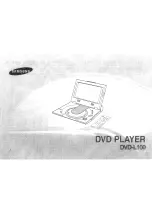
Installation / Initial Set-
Up (cont’d)
12
WARNING
NEVER exceed the rated wattage capacity of your generator.
OVERLOADING may cause SERIOUS DAMAGE to the generator and attached
electrical devices, and may result in fire.
Your generator MUST BE SIZED PROPERLY to provide both the running and starting (surge) wattage of
the devices you will be powering. Before using your generator, determine the running and starting
wattage requirements of all the electrical devices you will be powering
simultaneously. The sum of the
running and starting wattages of the devices being powered must not exceed the continuous output
rating of your generator.
(The continuous output rating of your generator is listed in the “Specifications”
section of this manual.) Note that:
•
Devices without electric motors such as light bulbs, radios, and televisions have the same running
and starting wattage.
•
Devices with electric motors such as refrigerators, compressors, and hand tools typically require a
starting wattage that is 3 to 5 times greater than the running wattage.
The running
and starting wattage requirements are often listed on a device’s nameplate. If wattage is
not given on the device’s nameplate, the wattage may be calculated by multiplying the nameplate
voltage by nameplate amperage, Watts = Volts X Amps.
Example conversion to watts:
120 Volts X 5 Amps = 600 Watts
If only the running voltage is given on the nameplate for a device with an electric motor, the starting
wattage can be approximated to be three to five times the running wattage.
Estimates for the running wattage requirements for common devices are listed in
Table 1
below.
Guidance for starting wattages is provided in the table’s footnotes.
Table 1
Device
Running
Watts
Device
Running
Watts
Air conditioner (12.000 BTU)
1700 (a,b) Jet pump
800 (a)
Battery charger (20 Amp)
500
Lawn mower
1200
Belt sander (3”)
1000
Light bulb (100 Watt)
100
Chain saw
1200
Microwave oven
700
Circular saw (6½”)
2000 (a,b) Milk cooler
1100 (a)
Coffee maker
1800 (a,b) Oil burner on furnace
300
Compressor (1 HP)
1400 (a,b) Oil-fired space heater (140,000 Btu)
400
Compressor (3/4 HP)
1800 (a)
Oil-fired space heater (85,000 Btu)
225
Compressor (1/2 HP)
1400 (a)
Oil-fired space heater (30,000 Btu)
150
Curling iron
700
Oven
4500
Dishwasher
1200
Paint sprayer, airless (1/3 HP)
600 (a)
Edge trimmer
500
Paint sprayer, airless (handheld)
150
Electric nail gun
1200
Radio
200
2. Planning the Power Load
Plan your power load so that you do not e
xceed the generator’s rated capacity.













































